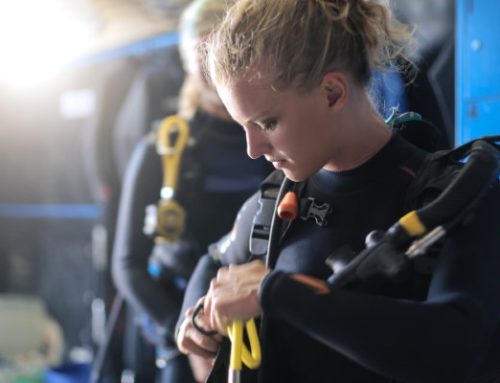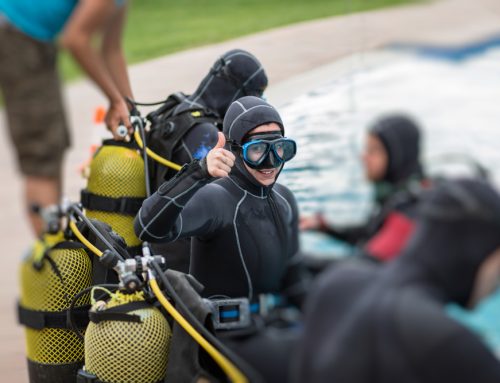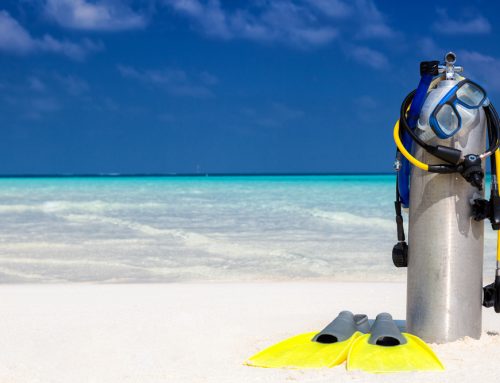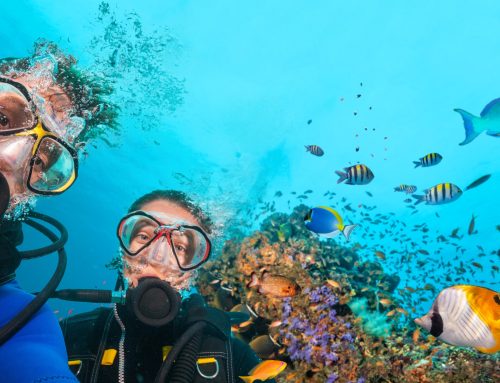Whether you’re preparing for your first scuba dive or you’re looking for more info on common diving gear, learn all you need to know about nitrox diving. This popular oxygen-enriched air option offers many benefits to divers. Here are the basics you need to know to get started diving with nitrox.
What Is Nitrox and Enriched Air Nitrox (EAN)?
These two terms are used interchangeably, but there is a slight difference that’s important to keep in mind. Any mixture of nitrogen and oxygen can be called nitrox, but a combination with more than 21% oxygen is often called enriched air nitrox, or EAN.
The air we breathe is 21% oxygen. Your diving tank should have at least the same amount of air for comfortable breathing while you dive. EAN tanks increase the oxygen percentage to offer a range of benefits. There are many blends of EAN, but here are the most common:
- Nitrox I with 32% oxygen and 68% nitrogen
- Nitrox II with 36% oxygen and 64% nitrogen
There are many other mixtures of nitrox available, but these are the most frequent. Don’t select an EAN tank before understanding the benefits, risks and other considerations of diving with nitrox. Just like the rest of your scuba equipment, you need to understand how to safely and effectively use your new tank before you take a dive.
What Are the Benefits of Nitrox Diving?
A huge risk that many divers face on deep dives is decompression sickness. More commonly known as “the bends,” decompression sickness is caused by nitrogen dissolving in your bloodstream. This can be a deadly sickness, so finding ways to avoid it are essential for divers.
Because nitrox includes less nitrogen and more oxygen, it helps reduce the risk of decompression sickness. While you may not be able to dive deeper, you can dive safely with nitrox instead of a typical oxygen tank. Nitrox contributes to longer bottom times during a no decompression dive.
Nitrox is a popular option for professional and amateur divers, but it comes with some risks. Learn more about the risks and importance of proper training before you dive with nitrox instead of standard oxygen.
Risks of Nitrox Diving
Be sure you use a dive table or dive computer to determine the depth your nitrox tank can handle. The additional oxygen amount decreases the depth of safe diving. Another risk you need to be aware of when diving with nitrox is oxygen toxicity.
Oxygen toxicity is the result of high levels of oxygen. Oxygen is essential, but too much of a good thing can lead to unconsciousness, seizures, and difficulty breathing.
There aren’t typically warning signs for oxygen toxicity, so be sure you know how to handle EAN and receive proper nitrox training safely. Even handling your equipment can be dangerous if you aren’t properly trained. Nitrox is highly flammable, so storing, handling, and cleaning your tank and valves can quickly become a fire hazard.
Learn More About Nitrox at A-1 Scuba
Don’t let the risks of nitrox keep you from enjoying a safe, unforgettable dive. For more information on nitrox certification and other safety courses, contact us today. Our professional team has the qualifications necessary to certify you in safe nitrox diving, so you can explore remote reefs and meet marine life with safe, efficient equipment. Learn from the best and prepare for any potential setback as you gear up for another unforgettable dive.
Photo credit By wavebreakmedia





